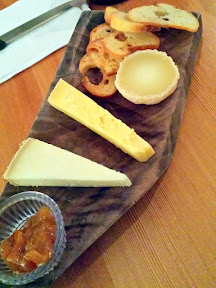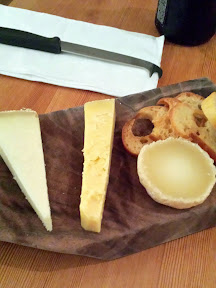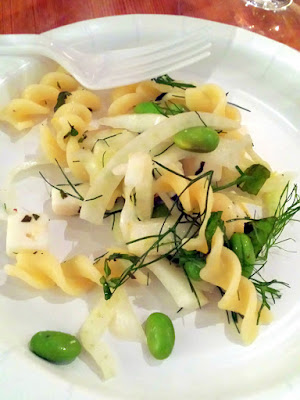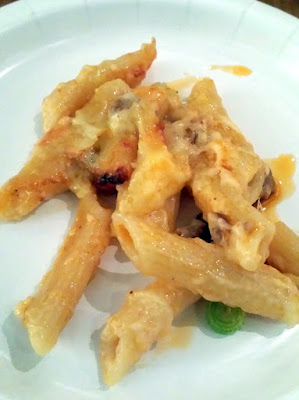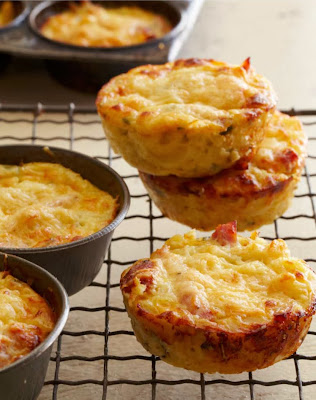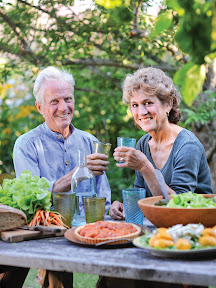I’ve been taking a little break from my online, food-related book club since this year I’ve joined two other book groups (I also read from Blogging for Books, and a women’s book club at work). But I’m back to the Kitchen Reader club this month with my book club review of Lunch at the Shop: The Art and Practice of the Midday Meal by Peter Miller (chosen by Emily of Highly Social Media).
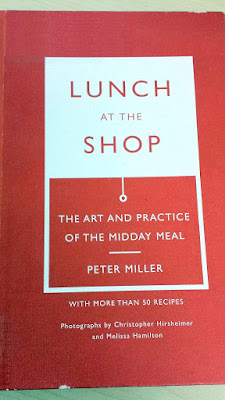
My high level review of Lunch At the Shop is that it really promotes an intentional lunch. Peter’s definition of this means
- Communal lunch with others (in this case with the employees of the bookshop he owns) where everyone shares stories
- Lunch is fresh which means preparing all or part of it at your workplace. Part of the reason for this is also to shift from your normal work tasks to a craft operation and shift into a different mindframe from your normal workday actions and decisions.
The purpose of this is to take back part of your workday to make it personal and a pleasure. He promises it will make the food better, your relationships better, and it does make a difference in improving your day by reviving you at the mid day point.
One of the fun things about reading this book for me is that I’ve been to Seattle several times, and particularly some of the shops that Peter mentions so it was very easy to picture exactly the ingredients he mentions. His location near Pike Place Market is probably too good to be true for most people, and it will likely take slightly more work to gather some of the items purchased from stores since it will entail visiting specialty stores which are more spread out for a normal person rather than within a few blocks from work or from various employee’s home or commute.
There are plenty among his more than 50 recipes that are simple, yet offer wonderful taste in the combination.

Recipe for Lentils folded into basil, spinach, and basil from Lunch at the Shop, by Peter Miller Photo by Christopher Hirsheimer and Melissa Hamilton
Part of this I think is because of his crucial notion of layering. He defines this as
It is a touch, a finish, and it makes all the difference in the world in any cooking. For the purpose of lunch, it is quite specific: a second or third touch to what you are presenting, the signal that someone, moments before, chose and arranged and set the plate. It is personal and specific… The layering may be no more than a handful of parsley or chives, a grind of black pepper, a little Parmesan – all quite simply a sign of life.
He explains that layering means a Horizontal Touch to add details next to what you are serving, or a Vertical Touch to build upon the structure of the dish with elements. Examples he uses are just adding a slice of orange and a little goat cheese on the side of lentil soup, or fresh Parmesan, parsley, and cracked pepper on a reheated pasta.
It was beautiful and dreamy to me as he described Parmesan falling like snow on soup or bread (or a dusting of Parmesan out to an edge of a salad… he clearly really loves Parmesan), or a spoonful of beans alongside a sandwich that you then wipe the oil left behind with the last bite of bread, or how “chives love the slow-talking goat cheese or the white face of a potato”.
Phases like those pepper throughout the book, as well as call out boxes where he just tells a personal story about an ingredient. This made the book very likeable reading for me. It really was clear how much he loves food and ingredients, and how a communal lunch, even in talking about what’s in the lunch, can invoke tales that bring people together.
Some of the recipes can totally be assembled at your work desk, while others are started at home and then a few select items are finished at the office. He often uses bread, beans, lentils, or pasta as a solid base. It was particularly the use of lentils that I earmarked several recipes. I love lentils but as he notes, it is not often remembered to be used even though is is, as he calls them, ” a noble assistant to many foods and a trusty backpack to many vegetables.” Fortunately, he eats them at least once a week so had several suggestions of lentil combinations.

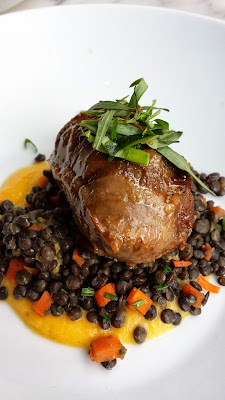
When was the last time you had lentils? Some memorable lentil dishes of my past include this Bowl with lentils, cilantro mint cashew sauce, black tea peach chutney, beets and paneer and also this dish of Pork Cheek with squash puree and chive beluga lentils
Other great tips I got included
- taking leftover pasta from dinner to work the next day and folding in a creamy soup or cup of hot chili with a little cheese, parsley, and lemon to rejuvenate it
- adding leftover rice into soup or salad
- the idea of instead of making sandwiches with sliced breads from a buffet of meats, using smaller rolls so you can make each one different – one with chutney, one with mustard and ketchup, one with horseradish and mayo so you can experiment
- he even has a way to really upgrade sushi in those containers with plastic grass with some lettuce and easy homemade dressing
I really enjoyed the book. Like most books I read for Kitchen Reader, I borrowed it from the library to read it and started taking photos of certain recipes I liked. Then I gave up and realized I was taking too many photos and should just buy the book! I found the book very inspirational to move away from restaurant leftovers or cafeteria food. I look forward to trying to make my lunch at work – though I’m not sure I will go all the way towards communal lunches yet.
If you are interested in the online book club the Kitchen Reader, the gist of our casual club is there is a new book selected for every month, each book is related to food, and members write a review on their blog during the last week of that month. For me, it is always interesting to read the round-up of reviews at the beginning of the month and see what other members have thought, and even when I haven’t made the round-up, it adds more food books to my list to read.
I did read the previous two books from the previous two months – Delicious by Ruth Reichl and Relish by Lucy Knisley but haven’t had time to create posts on those yet. I enjoyed both those books in a mixed way, so hope to get into details of that in the future.
For October the book club selected reading is Yes, Chef: A Memoir by Marcus Samuelsson and Veronica Chambers (chosen by Amanda of Omar Niode Foundation).
What do you think about the premise of the book about more intentional lunch, and do you think you could practice it?







